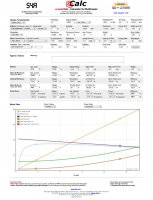BorisS
Drone Enthusiast
Hi Guys,
one questions keeps on coming up and that is how does the WKM reacts in wind. Some are convinced that its at par with other FCs, some are experiencing troubles and getting hard regulations from their system which makes it less of charm when using for a AV platform.
There are several videos out there which make a statement but at the same time it is a hard one to distinguish what they are actually telling us.
We have this test video from DJI were the Octo is leaning against the fan output:
http://v.youku.com/v_show/id_XMzA2MTcyNzY0.html
or my test with the quad:
At the same time though this is only have the game since a constant side wind is a total different story than actual gust stronger or lighter impacting the frame. So a impacting variable that changes and is not constant. Although my quad reacts nicely in the fight against the wind, it is not that brilliant out in the field dealing with changing wind speeds.
We can see from several videos that the GPS hold and altitude hold is very good in harsh conditions:
Gunter:
Jules_B
Although impressive and probably not the conditions one would expect to get good AV footage from anyways. The good gps hold and the alt hold are probably not the tools one it looking for to get workable footage from in harsh conditions, considering that our gimbal and stabilization systems are mechanically or due to there gyros capabilities not at the state to compensate. It could be though that this is the approach DJI is heading towards with the gimbal from which he have seen ( still to be proven ) amazing results.
Thoughts on what their approach is seen in nature :
I would be happy if you guys join in and give you thoughts what could be improved or how the behavior of the WKM could be changed to get less harsh but more forgiving compensation. If you add videos to show your finding it would be great if you add raw videos not post anything. It is always very hard than to distinguish what really went on and actually brings us right back to the beginning if the footage is not raw.
Also join in with you findings on gain setting prop motor combos that have given you good results.
One thing i haven't seen up to now is the direct comparison of different FCs on the same setup on the same day thus exact same conditions, or even better right next to each other. My point here is not to bash one FC over the other but to learn and understand how conditions are delt with.
Thanks
Boris
one questions keeps on coming up and that is how does the WKM reacts in wind. Some are convinced that its at par with other FCs, some are experiencing troubles and getting hard regulations from their system which makes it less of charm when using for a AV platform.
There are several videos out there which make a statement but at the same time it is a hard one to distinguish what they are actually telling us.
We have this test video from DJI were the Octo is leaning against the fan output:
http://v.youku.com/v_show/id_XMzA2MTcyNzY0.html
or my test with the quad:
At the same time though this is only have the game since a constant side wind is a total different story than actual gust stronger or lighter impacting the frame. So a impacting variable that changes and is not constant. Although my quad reacts nicely in the fight against the wind, it is not that brilliant out in the field dealing with changing wind speeds.
We can see from several videos that the GPS hold and altitude hold is very good in harsh conditions:
Gunter:
Jules_B
Although impressive and probably not the conditions one would expect to get good AV footage from anyways. The good gps hold and the alt hold are probably not the tools one it looking for to get workable footage from in harsh conditions, considering that our gimbal and stabilization systems are mechanically or due to there gyros capabilities not at the state to compensate. It could be though that this is the approach DJI is heading towards with the gimbal from which he have seen ( still to be proven ) amazing results.
Thoughts on what their approach is seen in nature :
I would be happy if you guys join in and give you thoughts what could be improved or how the behavior of the WKM could be changed to get less harsh but more forgiving compensation. If you add videos to show your finding it would be great if you add raw videos not post anything. It is always very hard than to distinguish what really went on and actually brings us right back to the beginning if the footage is not raw.
Also join in with you findings on gain setting prop motor combos that have given you good results.
One thing i haven't seen up to now is the direct comparison of different FCs on the same setup on the same day thus exact same conditions, or even better right next to each other. My point here is not to bash one FC over the other but to learn and understand how conditions are delt with.
Thanks
Boris
Last edited by a moderator:


